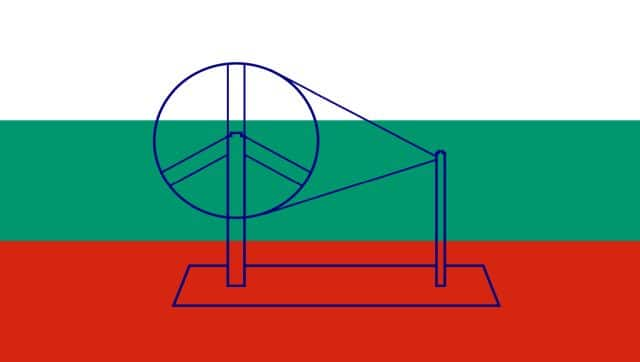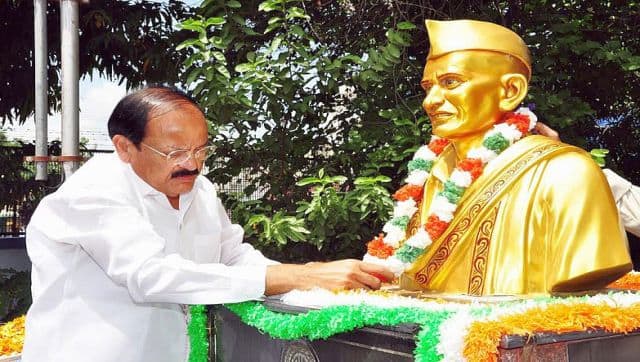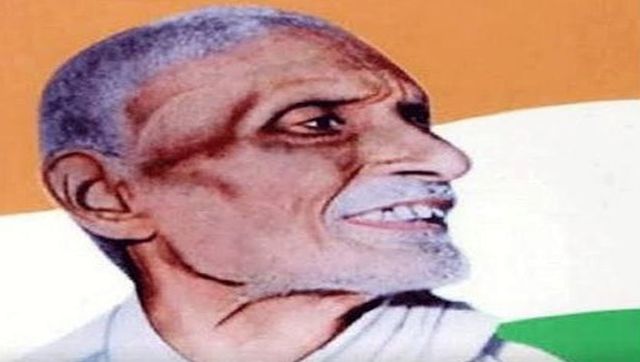A country is identified by its national flag, emblem and anthem. Today, when you think of India, as it marks its 75th year of Independence, the Tricolour comes to mind immediately. But, who do we have to thank for when it comes to our national flag? The man behind India’s Tricolour is Pingali Venkayya. Also read: Flag code tweak, tricolour for Rs 25, selfie points: How the Centre is going all out to make Har Ghar Tiranga a hit On his 146th birth anniversary today, the Union culture ministry is holding an event — Tiranga Utsav — to celebrate the contributions of Venkayya. The event, being attended by Home Minister Amit Shah, will also see the release of a commemorative postal stamp in his honour.
I pay homage to the great Pingali Venkayya on his birth anniversary. Our nation will forever be indebted to him for his efforts of giving us the Tricolour, which we are very proud of. Taking strength and inspiration from the Tricolour, may we keep working for national progress.
— Narendra Modi (@narendramodi) August 2, 2022
Let’s take a deep dive into Pingali Venkayya’s life and celebrate his many contributions to the nation. Pingali Venkayya’s early life On 2 August 1876, Pingali Venkayya was born into a Telegu Brahmin family in Bhatlapenumarru, Madras Presidency, British India (today’s Machilipatnam in Andhra Pradesh). After completing his high school studies in Madras, he went to Cambridge University and became a polymath — with interests in geology, agriculture, education and even in languages. A young Venkayya was then sent to South Africa to fight in the Second Boer War (1899-1902) war as a British Indian Army soldier. It was in South Africa that he was struck by the sense of nationhood the Union Jack inspired among British soldiers. As per legend, when the soldiers had to salute the Union Jack (the British national flag), it stayed in his mind and it was this incident that inspired him to design a national flag for India. It was also during this stint with the British Army that the 19-year-old met Mahatma Gandhi in Africa. He became a staunch Gandhian and followed Gandhi’s ideals and they became close with an association that lasted over 50 years. His love for languages is why he caught the attention of people. In 1913, he delivered a full-length lecture in Japanese, at a school in Bapatla, a town in Andhra Pradesh. He became instantly famous as ‘Japan Venkayya’. He was also known as Patti Venkayya because of his research into the Cambodia Cotton. Patti means ‘cotton’, which was very important for Machilipatnam, a former port city that became famous for its Kalamkari handloom weaves. After returning to India, he dedicated himself to the creation of a national flag for the country. In 1916, he even published a booklet on flags of other nations, A National Flag for India, offering nearly 30 designs of what could make the Indian flag. A flag is adopted From 1919 to 1921, Venkayya continuously kept pushing for the idea of having a national flag of India during the Congress sessions. Venkayya’s design for the National Flag was finally approved by Mahatama Gandhi in a Congress meeting in Vijayawada in 1921. “Pingali Venkaiah who is working in Andhra National College Machilipatnam, has published a book, describing the flags of the countries and has designed many models for our own National Flag. I appreciate his hard struggle during the sessions of Indian National Congress for the approval of Indian National Flag,” Mahatama Gandhi had written in Young India. The initial flag, called the Swaraj flag, consisted of two red and green bands; the two bands represented the two major religious communities — the Hindus and the Muslims. The flag also had a charkha, which represented Swaraj. On the advice of Mahatma Gandhi, Venkayya added a white band. The white represented peace. Though the first tricolour was not officially accepted by the All India Congress Committee (AICC), it began to be hoisted on all Congress occasions. [caption id=“attachment_10997911” align=“alignnone” width=“640”]  This is what the national flag first looked like after Venkayya accepted Gandhi’s suggestions. The red and green represented the main religious communities of India – Hindus and Muslims, while the white stood for peace and the charkha represented Swaraj. Image Courtesy: Wikimedia Commons[/caption] The redesign The flag kept being used, but it was in 1931 that concerns were raised about the religious aspect of the flag. Keeping that in mind, a Flag Committee was set up and they came up with a new idea, called Purna Swaraj. They replaced the red with saffron and changed the order of the colours, with saffron on top followed by white and then green. The charkha was placed on the white band in the middle. The colours stood for qualities and not communities; the saffron for courage and sacrifice, white for truth and peace, and green for faith and strength. The charkha stood for the welfare of the masses. Post-Independence, a national flag committee under President Rajendra Prasad replaced the charkha with the Ashok Chakra. [caption id=“attachment_10997921” align=“alignnone” width=“640”]  File image of Urban Development Minister M Venkaiah Naidu garlanding the statue of Pingali Venkayya at Pingali Venkayya AIR Station, in Vijayawada. PIB[/caption] Honouring Venkayya after his demise Venkayya breathed his last on 4 July 1963 in poverty. It was only in 2009, that he was dug out of history and a postage stamp was released in his honour. In 2015, the then Urban Development Minister, M Venkaiah Naidu had renamed AIR Vijaywada after Venkayya and unveiled his statue on its premises. Naidu had once said that Venkayya was the unsung hero of our freedom struggle who made an immense contribution. He devoted his entire life to the nation and worked relentlessly to make India a free country. Last year, his name was also proposed for the Bharat Ratna by Andhra Pradesh chief minister, YS Jagan Mohan Reddy. With inputs from agencies Read all the Latest News , Trending News , Cricket News , Bollywood News , India News and Entertainment News here. Follow us on Facebook, Twitter and Instagram.


)

)
)
)
)
)
)
)
)



